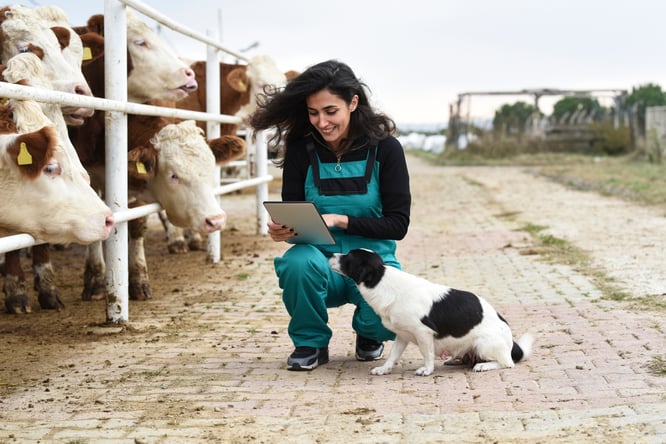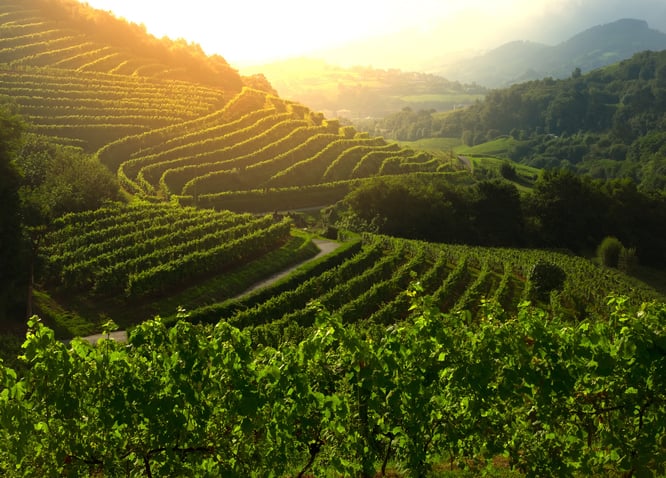Investments into agricultural technology, or AgTech --which encompasses IoT, AI and remote monitoring solutions-- reached more than $700 million last year, according to research firm CB Insights and there are plenty of reasons why. Large and small farmers alike face many challenges including:
- Keeping up with increased demand - 2050’s population will require 25-70 percent more food;
- Creating lean processes like precision farming,
- Incorporating sustainable practices amidst unpredictable weather conditions, and
- Improving transparency for the informed consumer.
There is an abundance of opportunities for farms to operate intelligently with connected devices and benefit from new technologies (automated greenhouses, drones for crop management, robotic milking); but one of the most feasible ways to begin is with IoT. In many instances, the data from connected sensors -which are declining in cost - can provide visibility into processes or into resources that would have otherwise had to be manually monitored. Because IoT uses connected sensors to enable owners to monitor assets and conditions from one remote location, this technology can help a farmer refine processes. These examples below will demonstrate some of the ways farmers have implemented IoT to create sustainable practices to save time, resources and costs.
Livestock Monitoring
On a multi-acre farm, a farmer could spend hours traveling from trough to pen to the edge of the field to check on the health of livestock. Today, however, farmers can use IoT to receive information about health, location, reproductive cycles and milk production without needing to travel anywhere.
By using special cattle tracking hardware, farmers can monitor an animal’s blood pressure, heart rate, respiratory system, or temperature from an app. Instead of waiting until several animals become ill, a farmer can be alerted when there is an inconsistency in the data for any animal's vital signs and have the ability to monitor all of their livestock from a centralized source. Additionally, technology worn by the animal can help farmers track locations in real time and know when an animal is in an active reproductive cycle.
The investment in IoT to monitor livestock has paid off for farmers in New Zealand. The Internet of Business group recently published a case study on how IoT and robotics can maximize milk output. The data that has been collected has even enabled the farm to supplement its cows’ diet for better milk production.
Livestock monitoring is just one way to get started with IoT in agriculture. We encourage our clients to start small with one problem or one opportunity area to learn how the data can best serve their operation. Saving time and reducing workload can benefit any farmer - even those without livestock to manage.
Crop Yield Management

For years, farmers have relied on technology to help them manage their response to the weather. Simple weather predictions based on satellite data help farmers to know when to irrigate. Today, emerging IoT applications can deliver far more data points to optimize the use of natural resources. By using connected sensors, farmers can monitor crop health, soil acidity, moisture levels, leaf water potential, microclimates and more. Being able to store and analyze a combination of data from the field can help farmers or multi-site owners know how to use water, when to treat pests if there’s an infestation or manage other problems. In addition, an IoT application built for analysis can help farmers rely on real-time information instead of manual observations. From one centralized location, farmers and owners can adjust strategies and increase yields.
Farmers can benefit from data the most when they are able to manage multiple streams of data. If the data is organized well and able to be analyzed in real time, it may be able to help preserve resources immediately.
Waste Reduction

On the Wildman family farm in New Zealand, one man began a quest to preserve his farm’s most precious resource: water, with IoT. Richard Wildman was well aware of how much work was required to run his family’s farm and began searching for ways to reduce the daily operational burden.
After learning that IoT could collect data from multiple sources and deliver it over long distances, he created Knode. Knode is a tech startup that integrates new and emerging IoT projects for New Zealand businesses and consumers to monitor their critical assets. Knode enables its customers to collect, store, analyze, display and transfer data related to their infrastructure. Knode uses sensors, the Sigfox low power wide area network (LPWAN) and the Losant Enterprise IoT Platform. Read the complete story about Richard Wildman and Knode here.
Incorporating new technology into any industry can prove challenging as major stakeholders or sole owners prefer to see results immediately. The power is not only in the preservation of time, but also in the ability to analyze the data. The Losant platform comprises all of the components necessary to take advantage of data immediately and can allow farmers or commercial farm owners to easily integrate data from multiple sources (weather, work schedules, asset locations) into one platform. If you’d like to learn about how IoT can add value to your operation, meet with one of our Solution Engineers today.
